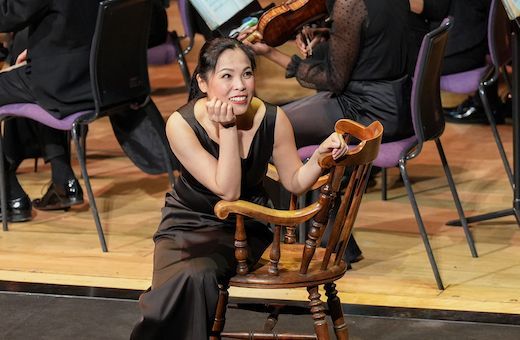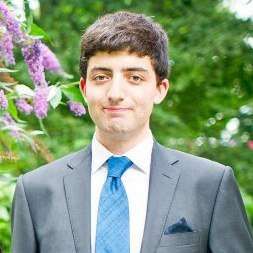Semi-staged operas have been a consistent feature of Sir Mark Elder’s years at the helm of The Hallé, with Wagner’s Ring a particular highlight between 2010–2018. This production of Madama Butterfly was originally scheduled to precede the Tokyo Olympics as a Manchester-Tokyo cultural link, but was delayed by you-know-which virus. Tonight, a strong cast of soloists joined a small but punchy chorus from the Royal Northern College of Music to present what Elder describes as the composer’s finest work to close the season. Although the level of dramatic engagement from the singers was somewhat uneven, the musical quality was of the highest order.

The highlight of the evening by some distance was the superb singing of Japanese soprano Eri Nakamura, who sang with complete assurance from start to finish. Her superbly rounded, fulsome tone combined with an energetically animated dramatic performance to create a remarkable stage presence. “Un bel dì vedremo” and her farewell to her son were unbearably moving, though there was also convincing tempestuous fire elsewhere. Opposite her, Thomas Atkins sang with an attractive tone as Pinkerton, though struggled to project against the large orchestra immediately behind him at times, the balance perhaps not as sympathetic as it might have been. His nonchalance and impetuousness in his treatment of Cio-Cio-San were well conveyed, though, and his soft duet with Nakamura at the end of Act 1 allowed his rich sound to come through.
David Bižić sang Sharpless with faultless clarity in his attention to the text, and exuded sincerity and benevolence in his bold sound and engagement with the drama. Ann Taylor’s Suzuki grew into her role, singing with warmth throughout but finding increasingly convincing maternal-style affection for Cio-Cio-San in Acts 2 and 3, especially in their Flower Duet. Jihoon Kim (The Bonze) and Alasdair Elliott (Goro) respectively sang with imperious fury and colourful scheming. In the smaller roles, James Cleverton’s Yamadori and Katie Coventry’s Kate Pinkerton maintained similarly high standards.
Gerard Jones’ production was unobtrusive, using just a few props (prayer bells, a chair, a portrait of Cio-Cio-San’s son) and a dozen atmospheric lights (designed by Adam Nichols) at the back of the stage. The final scene, in which the young son is blindfolded to the suicide of his mother, was described by surtitle rather than onstage action. Collectively the singers made good use of their narrow strip of extended stage, though the levels of acting were not entirely even.
Enormous credit must go to the two-dozen or so young singers from the RNCM Opera Chorus, who covered the other supporting roles and chorus with wholehearted conviction. Their renouncement of Cio-Cio-San with the Bonze in Act 1 was thrilling, their huge sound belying their small number. The musicians of The Hallé themselves played with superb raw passion when called upon, but above all with utmost beauty of sound in the strings, guest-led by Roberto Ruisi. The central placement of the harp between cellos and violas was also a shrewd move. At the helm, Elder paced the drama immaculately, allowing the arc of the story to unfold naturally. If at times the balance between singers and orchestra wavered, it was nonetheless stirring to hear this orchestra play Puccini with such passion. Two years delayed this performance may have been, but it was certainly worth the wait, even if it did all end in tears.


